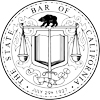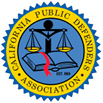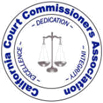If you are involved in a vehicle accident in Sacramento, you may feel stressed, confused, and frightened. It is no wonder most individuals panic and flee the accident scene. While the conduct can sometimes be reasonable, it is a crime in California. The law requires you to stop and provide proper identification to parties involved in the accident and the police. Otherwise, you will face misdemeanor charges under VC 20002 if there were no injuries. If you are arrested for hit and run, consulting a defense attorney can make the difference between your freedom and incarceration. At Foos Gavin Law Firm, we can take the relevant measures to ensure you obtain the most favorable case outcome. It can involve a thorough collection of evidence, interviewing witnesses, analyzing evidence, and aggressively representing you in the courtroom.
Defining Misdemeanor Hit and Run
VC 20002 makes it an offense when an individual fails to stop their motor vehicle following a car collision that leads to property damage.
Before convicting you of this crime, the prosecution must prove the following elements of the crime:
- While operating your car, you were involved in an accident
- The collision caused damage to another person’s property
- You were aware or reasonably must have been aware that you were involved in a crash that resulted in property damage
- You did not stop at the accident scene or give the property owner your identifying information
Identifying information means any number or name that can be used alone or with other information to identify a specific person. It can be the name, telephone number, address, date of birth, or social security number.
You engage in a behavior willfully when you do it on purpose or deliberately. You do not need to intend to violate the law, injure another person or gain an advantage.
Please note that your responsibility to stop applies irrespective of the party at fault. Additionally, the responsibility applies even when the accident happened on a private asset. If the damaged property’s owner is not present, you should leave them a note.
Under VC 20002, property damage includes damage to any pet.
Penalties Attracted by VC 20002
If the crime did not cause any injuries, you would face the following potential penalties:
- A maximum of six months in county jail
- Up to $1,000 in fines
Sometimes the judge can award you a summary or misdemeanor probation in place of incarceration. While the judge has the discretion of imposing probation conditions, the condition should be reasonably linked to the crime and fitting and proper to the end that the court can execute justice. Common conditions include:
- Paying fines and victim restitution
- Seeking lucrative employment
- Engaging in community service
- Attending all court hearing
- Participating in a group or individual therapy
- Not violating any other law
If you made full victim restitution, the judge could dismiss your case under Penal Code Section 1377 civil compromise. It is particularly true if you are a first-time defendant and were not drunk during the crash.
Civil Penalties for Misdemeanor Hit and Run
If you caused a collision, the other party involved could take legal action for the damages and losses incurred. The lawsuit can seek monetary compensation for property damage, lost income, pain, and suffering, lost earning capacity, and medical bills.
Generally, a personal injury claim is likely to occur even when you did not commit a hit and run at the accident scene, provided you are responsible for the vehicle-related collision. However, if you are accountable for Vehicle Code Section 20002 alongside causing the crash, the compensation that the court orders you to make will be increased.
The court awards punitive damages to the plaintiff. Punitive damages do not cover the victim’s losses. Instead, they are tailored to punish a defendant’s outrageous or dangerous conduct. A VC 20002 violation can qualify.
Fighting Misdemeanor Hit and Run
Some of the legal defenses that your criminal defense lawyer can use to fight your criminal charges include the following:
You Did Not Cause Any Property Damage
One element of the crime under Vehicle Code 20002 is that you did not stop following an accident that resulted in property damage. Therefore, you can claim that although you sped off following the collision, you did not cause any property damage.
Additionally, it is a defense for you to prove that no other asset was damaged apart from your motor vehicle. The prosecution is not interested in whether the responsible motorist’s property is damaged.
You Did Not Know of the Accident
It is common for fender bender collisions to happen without the parties involved realizing it. If the motorist had their radio on, they could sincerely be unaware of slight scrapes.
The ignorance legal defense is practical if you operate a lower-cost or older motor vehicle. Modern and high-end vehicles come with sensors that beep once another car gets too close.
You Were Misidentified
Generally, in a hit-and-run accident, the defendant drives away too fast for any person at the accident scene to have a look at them. Prosecutor also has insufficient proof to identify the responsible driver effectively. It can result in innocent individuals being mistaken as the suspects.
On top of using surveillance video, your criminal defense lawyer can find witnesses and recorded communication showing that you had an alibi during the accident.
What Happens If the Property Damage Only Happened to Your Vehicle?
It is legal to leave an accident scene that did not cause damage to another motor vehicle or any injury. However, to be on the safe side, you should capture images of the other vehicle to prove no damage took place.
If you are not sure whether there was property damage, ensure you stop and exchange your details with all the involved parties. If the other motor vehicle was unattended and parked, ensure you leave a note.
Common examples of invisible collision damage include:
- Leaks
- Misaligned tires
- Broken light bulbs
- Delay to the computer diagnostic system
- Reduced battery life
Please note that any person you hit could seem okay but have suffered soft-tissue injuries that can take time before manifesting.
Your insurance provider requires you, the policyholder, to inform them of every collision, including fender benders. Otherwise, your insurer can deny a claim that arises from your accident.
Are There Crimes Related to VC 20002?
The section below discusses offenses charged alongside or in place of VC 20002.
Felony Hit and Run
Under Vehicle Code Section 20002, it is a California felony when a driver flees the accident scene when somebody else dies or sustains severe injuries. The driver should stop and offer reasonable help to the injured individual.
Violation of the statute is a wobbler; you can be prosecuted with either a felony or a misdemeanor, depending on the case circumstances.
A misdemeanor carries up to a year in county jail. On the other hand, a felony attracts a three-year sentence in California state prison.
Driving Under the Influence (DUI)
Vehicle Code Section 23152(a) makes it illegal to drive a car while under the influence of alcohol. The statute defines under the influence as the motorist’s mental and physical capabilities being too impaired to a level that the driver cannot operate the car with the caution of a sober driver.
A first-time DUI offense is a misdemeanor punishable by:
- Summary probation
- Enrollment in DUI school
- Fines
Withdrawal of driving privileges, although you can continue driving provided you install an ignition interlock device in your motor vehicle.
Driving Without a License
Under VC 12500(a), it is illegal to drive without your valid driver's license.
It is not necessarily that the license is from the Golden State. The jurisdiction does not matter provided:
- The country or state where you reside issued the license, and
- The license is valid for the form of car you are operating.
The crime is a wobblette; you can face either an infraction or a misdemeanor depending on the case circumstances. An infraction is punishable by $250 in fines. If charged with a misdemeanor, you will spend six (6) months in jail and pay fines of $1,000.
Understanding the California Court Process
A misdemeanor involves a structured criminal court process that includes the following steps:
Investigation
Typically, the criminal case can start with law enforcers witnessing the suspect before arresting them.
Sometimes the law enforcers can contact you for questioning. In this case, you should invoke your right against self-incrimination under the 5th Amendment to the United States Constitution and hire a defense lawyer. Your legal counsel can talk to the police on your behalf.
Your attorney can also convince the prosecution to drop your investigation by proving that there is insufficient evidence to arrest you.
Arrest
After the police arrest you, they will process or book you. Booking refers to the police taking you to the police station and:
- Searching your criminal record
- Taking note of your crime’s facts
- Recording your personal details like name, address, date of birth
- Collecting your fingerprints
Then you will be either released or held in police custody. Accused persons are either released:
- By posting bail (either through a bail bond agent or a cash bail)
- On their own recognizance (OR)
Bail is the amount you post with the court to assure that you will attend all your scheduled court hearings and comply with the terms and conditions of your release. Typically, bail is set according to your county bail schedule. However, the judge has the discretion to either raise or reduce the scheduled bail amount.
It is not necessarily that the police read your Miranda Warning immediately after your arrest. However, the police should read Miranda Warnings before interrogating you. The police should advise you to remain silent, allowing your attorney to speak on your behalf.
After your arrest, the district attorney will determine whether to press the charges or not. If the district attorney refuses to press the criminal charges, they will drop your case and release you. The judge will schedule your arraignment if the D.S. files the criminal charges.
Arraignment
The arraignment is your initial formal court hearing after your arrest. The proceeding is held in front of a judge.
The court will advise you of the charges against you during the arraignment. You can then enter a plea. Three main pleas include:
- No contest
- Guilty
- Not guilty
If you enter a “not guilty” plea, the court will address bail if you are detained. If you enter a no contest or guilty plea, your case will proceed to the sentencing phase.
Pre-Trial Court Process
The pre-trial process is the duration of your criminal case after arraignment before your trial starts. The phrase represents the duration when most cases are settled. For instance, the prosecutor can dismiss the case, or the accused can enter into plea bargain negotiations and proceed to the sentencing.
The length of the pre-trial court process varies depending on how complicated the case is.
Pretrial includes the following proceedings:
- Court hearings
- Discovery
- Plea negotiations or bargain
- Motion practice
- Discovery
Discovery means the process of exchanging details between the prosecutor and the criminal defense lawyer.
The rationale is that every side will learn what proof the other party will present at the trial. Generally, discovery can reveal:
- Police report
- Expert statements or reports
- Witness statements
- Physical evidence related to your case
Motion Practice
It refers to the defense counsel or prosecution requesting the court make specific rulings regarding some aspects of the criminal charge.
A perfect example is a motion to suppress proof. The criminal defense lawyer requests the court to exclude specific evidence from the criminal case.
Another motion is the Pitchess motion, where the defense requests information in the law enforcer’s personnel file about previous complaints of bias, police misconduct, or excessive force.
Trial
A case that fails to resolve during pretrial court proceedings proceeds to trial.
While you have a right to a speedy trial, you can choose to delay your trial for a couple of weeks.
All defendants charged with a misdemeanor are entitled to a jury trial. The following are different stages of a jury trial:
- Jury selection
- Lawyers present evidence
- Opening statements
- Closing arguments
- Verdict
- Jury deliberations
- Sentencing if found guilty
The prosecutor has the burden to prove beyond any reasonable doubt that you violated the law before convicting you.
Appeal
When found guilty, you have a right to appeal your verdict. Nevertheless, there are grounds for appeal that typically involves flaws in the court process like:
There was no sufficient evidence to support the guilty verdict
The court made mistakes of law during the process that affected your case outcome
A mistake of law can involve a situation like the judge permitting evidence to be used when acquired through an unlawful search. The appellate court could send the case back for a new trial or override the guilty verdict if the court made a mistake. Please note that the appellate court does not re-decide your case facts.
The appeal is a complicated process that requires an experienced defense attorney.
Your Constitutional Rights as a Defendant
When facing a criminal charge, you must understand your constitutional rights. However, as it is almost impossible to learn the intricacies of the constitution on your own, it is advisable to engage a lawyer who can apply the constitution’s protection for you.
The section below explores several constitutional rights.
Entitlement to Remain Silent
The 5th Amendment to the United States Constitution offers that you cannot be forced in a case to testify against yourself. If you choose to keep quiet, the prosecution cannot call you as a case witness, nor can the defense attorney or judge force you to testify.
You Can Confront Any Witness
The 6th Amendment gives the accused the entitlement to be confronted by the witnesses against them. It allows the defendant to cross-examine these witnesses.
Additionally, the amendment makes it illegal for the prosecutor to prove your guilt with written or oral hearsay statements from any non-testifying witness unless the court determines the hearsay is non-testimonial. Statements made during an emergency are non-testimonial.
You are Entitled to a Public Trial under the 6th Amendment
The presence of your loved ones, the press, and ordinary citizens ensures that the prosecutor observes constitutional rights linked to trials.
Right to a Jury Trial
The jury can try you under the 6th Amendment. Generally, the jury comprises 12 members who require a unanimous verdict before convicting the accused. If there is no unanimity (hung jury), you will go free unless the prosecution chooses to retry your case.
Potential jury members are chosen randomly from the community. The selection process should allow lawyers and judges to remove prejudiced jurors. Your criminal defense attorney can eliminate a jury member when they feel the individual will not favor their side. However, the decision should not be based on the juror's characteristics like religion, nationality, sex, or race.
Right to Speedy Trial
The 6th Amendment entitles defendants to a speedy trial. Nonetheless, it does not specify the time limits.
Typically, judges decide whether the trial has been delayed before throwing it out, depending on the case facts. When determining, the judge will consider:
- The delay’s length
- The rationale for the delay
- The effect of the delay on the accused’s position
Entitlement to Adequate Representation
According to the United States Supreme Court, defendants have a right to adequate representation during plea bargain negotiations and trial. The attorney should do an exceptional job at defending you and your rights. Nevertheless, adequate representation does not imply perfect representation.
Some of the circumstances that cause the judge to reverse a guilty verdict based on a lawyer’s incompetence include:
- The lawyer putting an intern in charge of your defense and leaving the court while your case is going on
- The attorney acknowledging that you are guilty of less severe charges during the closing argument without seeking your approval of the legal strategy
Right to Legal Representation
According to the 6th Amendment to the U.S. Constitution, all defendants are entitled to legal assistance. If you cannot afford a lawyer, the judge should appoint a public defender at government expenses before sentencing you.
What a Criminal Defense Lawyer Can Do for You
Regardless of how well educated and intelligent you are, the California criminal justice system makes it almost impossible to do a competent job of representing your life, freedom, and rights. Every criminal case is unique, and only an experienced lawyer can review the case circumstances and help you obtain the most favorable case outcome.
Your defense lawyer does more than question witnesses in the courtroom. They can also:
- Negotiate a plea deal with the prosecution, leading to a reduced charge and lesser sentence. On the other hand, the prosecutor can be uncooperative with a self-represented defendant.
- Your lawyer understands the hidden costs of pleading guilty that you can never consider.
- They can collect information from the prosecutor’s witnesses. Generally, witnesses fear defendants and refuse to speak with self-representing people. A witness is more likely to talk to your lawyer.
- They will dedicate enough time to your case that you cannot afford to spend. You might have a job and therefore lack time to spend on time-consuming activities like collecting and reviewing evidence, speaking with witnesses, and conducting legal research.
- Your defense lawyer is acquitted of the court procedures and customs. For instance, the attorney knows which prosecutor can settle your misdemeanor hit and run case and the arguments that appeal to the prosecutor.
- Additionally, they will offer you a reality check (an objective and knowledgeable perspective on your situation and the possible outcome should the case proceed to trial). The view can help you determine whether to accept the prosecutor’s plea offer.
- Finally, they can formulate legal strategies and a sentencing program that suits your needs. It can help you avoid future brushes with the criminal justice system and cope with feelings of embarrassment, lowered self-esteem, anxiety, and fear.
Contact a Seasoned Criminal Defense Attorney Near Me
Car accidents are bound to occur despite how cautious you are as a driver. How you handle the crash’s aftermath is crucial, and in California, it is illegal to leave the accident scene without providing your identifying information. If not complied with, your conduct can attract penalties like fines and incarceration. With the life-altering penalties involved, it is essential to retain a skilled Sacramento lawyer if you are charged with a hit and run. At Foos Gavin Law Firm, we want to hear your side of the story and believe you are innocent until proven guilty. We can review the case facts and explore potential legal defenses. Please contact us at 916-779-3500 to schedule your free and confidential initial consultation. Our experienced legal team is ready to fight for you.















